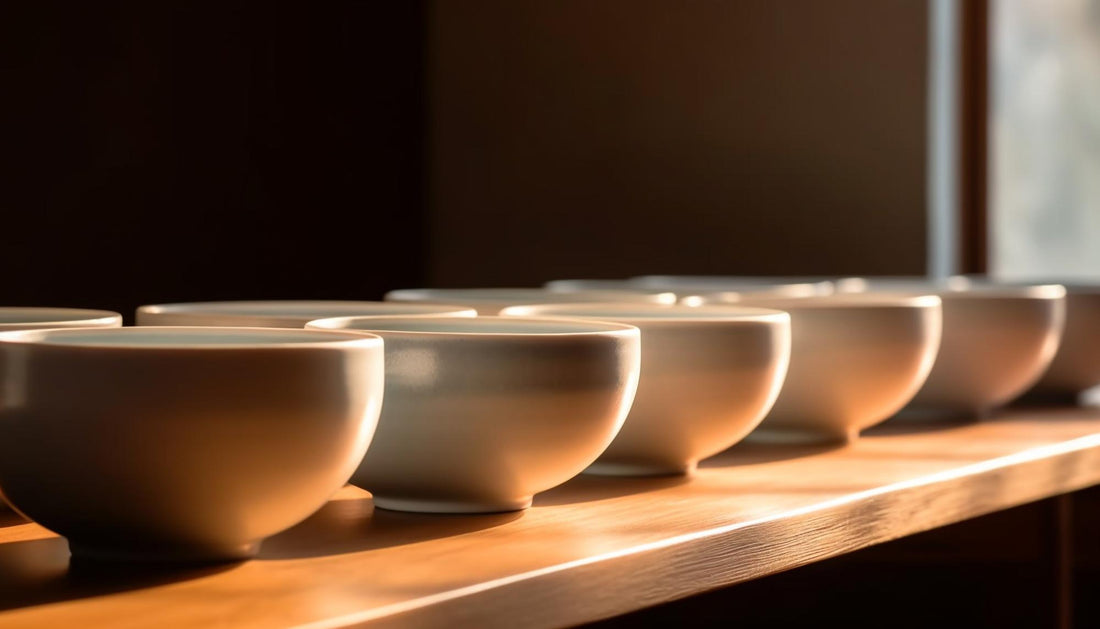Pottery has been around for thousands of years, and there's something incredibly special about creating something beautiful and functional from a lump of clay. If you're new to pottery and curious about how it all works, you're in the right place. As a pottery enthusiast who’s been spinning the wheel and shaping clay for years, I’m excited to take you through the fascinating process of making pottery. Let’s dive in!
Preparing the Clay
Selecting the Right Clay
The journey of pottery begins with choosing the right clay. There are several types of clay, each with its own unique properties. Earthenware is great for beginners because it's easy to work with and fires at a lower temperature. Stoneware is more durable and can be used for functional pieces like mugs and plates. Porcelain, on the other hand, is known for its fine texture and is often used for more delicate pieces.
When I first started, I experimented with different types of clay to see which one I liked best. I found that stoneware suited my style perfectly as I wanted to create functional tableware. It offered me a good balance between workability and durability.
Wedging
Once you’ve chosen your clay, the next step is wedging. This is essentially kneading the clay to remove air bubbles and ensure a uniform texture. Think of it like preparing dough for baking. Wedging also aligns the clay particles, making it easier to work with. I remember my first few attempts at wedging were a bit messy, but with practice, it became second nature.
Forming the Pottery
Hand-Building Techniques
There are two main methods for forming pottery: hand-building and wheel throwing. Hand-building includes techniques like pinch pots, coil building, and slab construction.
- Pinch Pots: This is the simplest technique and a great way to start. You literally pinch the clay into shape using your fingers.
- Coil Building: Involves rolling out long snakes of clay and stacking them to build up the walls of your piece.
- Slab Construction: Here, you roll out flat slabs of clay and cut them into shapes to assemble.
Wheel Throwing
For many, the potter's wheel is where the magic happens. Wheel throwing involves shaping clay on a rotating wheel. Here’s a basic rundown:
- Centering the Clay: This is the first and most crucial step. You need to get the clay perfectly centered on the wheel to ensure your piece is balanced. I struggled with centering at first, but with time, I learned to recognise the feel of well-centered clay.
- Opening and Pulling: Once centered, you open up the clay by pressing your thumbs into the center, then pull up the walls to create height. This part takes practice, but it's incredibly satisfying to see your piece take shape under your hands.
I’ll never forget the first piece I made on the wheel. It was so wonky and barely survived by the end of the throwing session. Each attempt since then has been a learning experience.
Drying and Trimming
Leather-Hard Stage
After forming your piece, it needs to dry to a leather-hard stage. At this point, the clay is firm but still workable. This is the perfect time for trimming and adding details like handles or foot rings.
Trimming
Trimming involves refining the shape and removing excess clay from the base of your piece. It’s a bit like sculpting and helps to give your piece a professional finish. My first few trimming sessions were a bit nerve-wracking, but they taught me the importance of patience and precision.
Bisque Firing
First Firing
Once your piece is dry, it's time for the first firing, called bisque firing. This firing hardens the clay, making it more durable and ready for glazing. Pieces are fired in a kiln, a special furnace that can reach very high temperatures.
Kiln Basics
There are different types of kilns, but they all serve the same purpose. Firing pottery is a complex process, and getting the temperature just right is crucial. My first bisque firing was a mix of excitement and anxiety, but seeing my pieces come out solidified and ready for glazing was a fantastic feeling.
Glazing
Types of Glazes
Glaze is a layer of melted glass fused with the ceramic body during firing. Glazing is where you can get really creative. Glazes come in all sorts of colours and finishes, from shiny and glossy to matte and textured. They not only add beauty but also make your pieces food-safe and waterproof.
Glazing Techniques
There are several ways to apply glaze:
- Dipping: Submerging the piece in a bucket of glaze.
- Brushing: Applying glaze with a brush, which is great for detailed work.
- Pouring: Pouring glaze over the piece for a more fluid application.
One of my favourite pieces is a mug with a beautiful blue glaze that I achieved by dipping it halfway and then using a brush to add intricate patterns. Experimenting with different glazing techniques can lead to some stunning results.
Glaze Firing
After glazing, the piece goes back into the kiln for the glaze firing. This second firing melts the glaze, creating a smooth, glass-like surface. Each glaze firing is a bit of a mystery until you open the kiln. I still get a thrill of anticipation every time I peek inside to see how the glazes have turned out.
Final Firing (Glaze Firing)
Second Firing
The second firing, or glaze firing, is typically done at a higher temperature than the bisque firing. This process fuses the glaze to the pottery, creating a durable, glossy finish.
Temperature and Atmosphere
Kiln temperature and atmosphere (oxidation or reduction) can significantly affect the final appearance of your glazes. It's a science and an art combined. I remember one glaze firing where I accidentally fired in reduction instead of oxidation, resulting in unexpectedly beautiful, unique colours.
Finishing Touches
Inspecting the Final Piece
Once your piece has cooled, inspect it for any imperfections. Sometimes, minor issues can be fixed with a bit of sanding or polishing.
Polishing and Sanding
For a professional finish, you might want to sand the bottom of your piece to ensure it’s smooth and won’t scratch surfaces. A little polishing can also make your piece look extra special.
Personal Touch
Adding a personal touch, like a signature or date, can make your piece even more special. I always sign the bottom of my pieces. It's a small touch, but it makes each one feel like a completed work of art.
Conclusion
And there you have it! The process of making pottery, from a lump of clay to a finished, glazed piece, is a journey filled with creativity, patience, and a bit of science. Each step offers its own challenges and rewards, and with practice, you'll find your own rhythm and style.
Remember, every piece you make is a learning experience, and the imperfections are what make handmade pottery so charming and unique. So grab some clay, get your hands dirty, and start creating. Happy potting!


